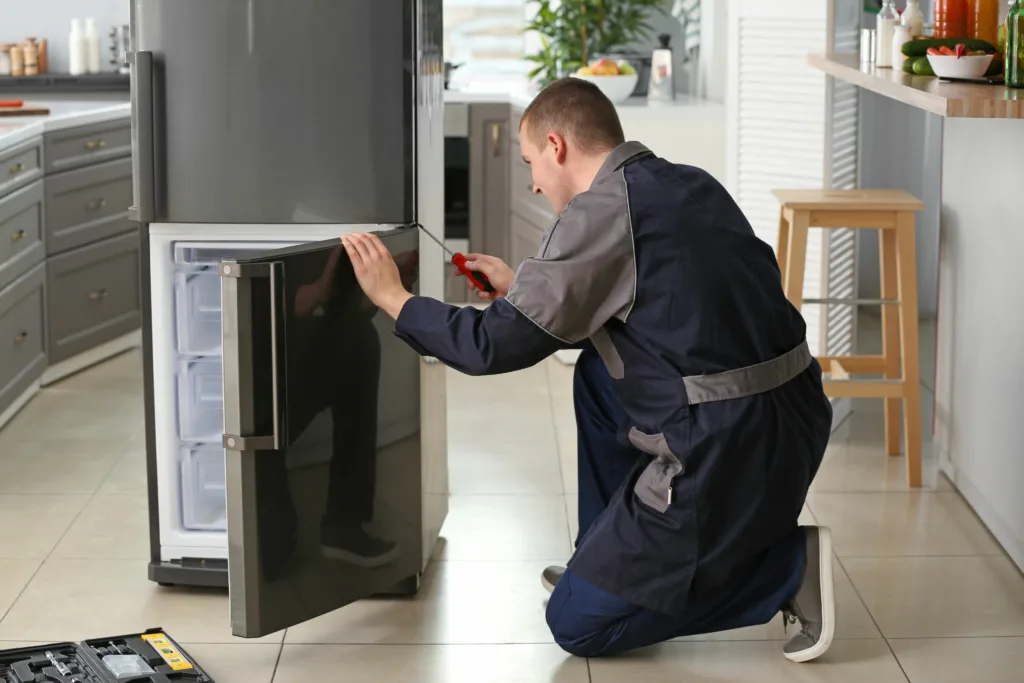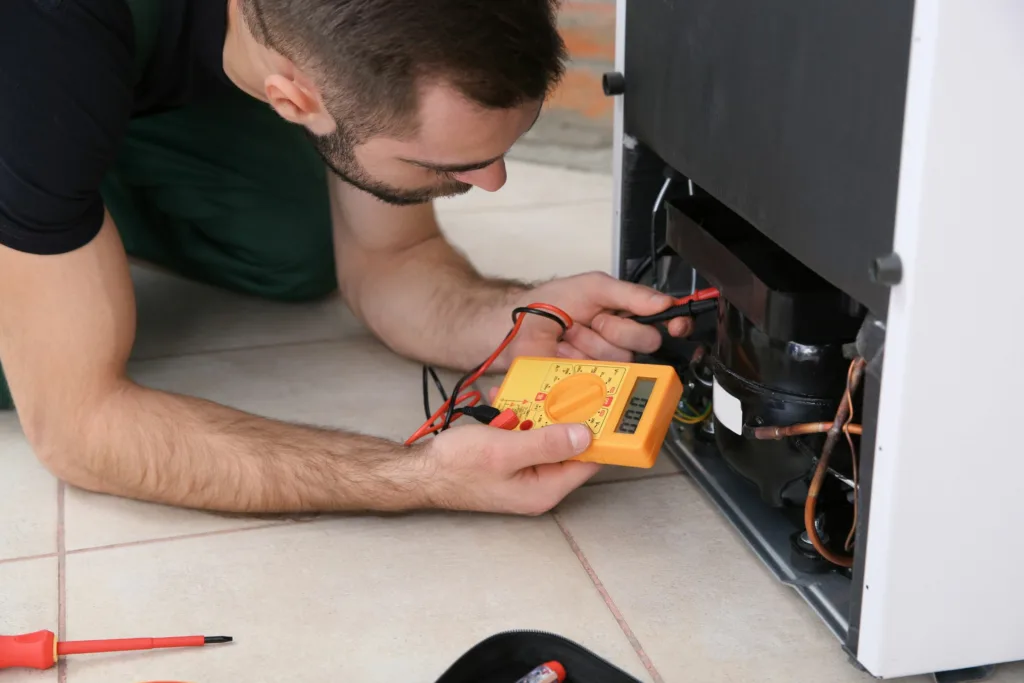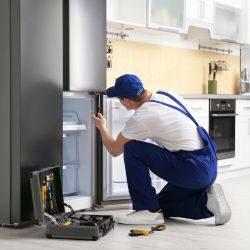A properly functioning refrigerator is essential for keeping your food fresh and maintaining its quality. However, if you notice that your fridge is not cooling as it should, it can be a cause for concern. In this blog, we will explore the various reasons why your fridge may not be cooling and provide you with some troubleshooting tips to get it back to its optimal performance.


Check the power source
The first thing you should do when you notice that your fridge is not cooling is to check the power source. Make sure that the refrigerator is properly plugged in and that the power outlet is functioning. Sometimes, a loose or faulty power connection can prevent the fridge from cooling.
Temperature Settings
nother common reason for a fridge not cooling is incorrect temperature settings. Ensure that the temperature dial or control panel is set at the appropriate level. It’s recommended to keep the fridge temperature between 34°F and 40°F for optimal cooling.
Clean the Condenser Coils:
The condenser coils located at the back or underneath the fridge play a crucial role in cooling the interior. Over time, these coils can accumulate dust, dirt, and debris, hindering their ability to remove heat from the fridge. Regularly cleaning the coils can improve the cooling efficiency of your refrigerator.
Check the Door Seals:
Faulty door seals can lead to air leakage, causing the fridge to lose its cooling capacity. Inspect the rubber gasket around the refrigerator doors for any signs of damage or wear. If needed, clean the seals and ensure they are properly sealing the fridge doors to maintain a consistent temperature.
Refrigerant Leak
The evaporator fan is responsible for circulating cool air throughout the fridge. If the fan is not working properly, it can result in inadequate cooling. Listen for any unusual noises coming from the fridge and check if the fan is spinning. If not, it may need to be replaced.
How to Fix Refrigerator Not Cooling
1. Check the Power Supply
Firstly, ensure that your refrigerator is securely plugged into a functioning power outlet. Sometimes, a loose plug or a tripped circuit breaker can interrupt power supply, leading to cooling issues.
2. Adjust Temperature Settings
Review the temperature settings on your refrigerator. Verify that both the fridge and freezer compartments are set to the appropriate cooling levels. Adjust as necessary and monitor for improvements.
3. Clean the Condenser Coils
Dirty or clogged condenser coils can impede the refrigerator's cooling efficiency. Use a vacuum cleaner or a coil brush to gently remove dust and debris from the coils, located either behind or beneath the fridge.
4. Inspect Door Seals
Inspect the door seals for any signs of wear or damage. Cracked or worn-out seals can allow warm air to enter the refrigerator, affecting its cooling ability. Replace damaged seals to ensure a proper seal.
5. Allow Space for Air Circulation
Ensure that there is adequate space around the refrigerator for proper air circulation. Restricted airflow around the appliance can hinder its cooling performance. Keep at least a few inches of clearance on all sides.
6. Check for Refrigerant Leaks
If none of the above steps resolve the issue, there may be a refrigerant leak. Look for any signs of oily residue or frost buildup on the refrigerator's components, indicating a leak. If detected, contact a professional technician for repair.
